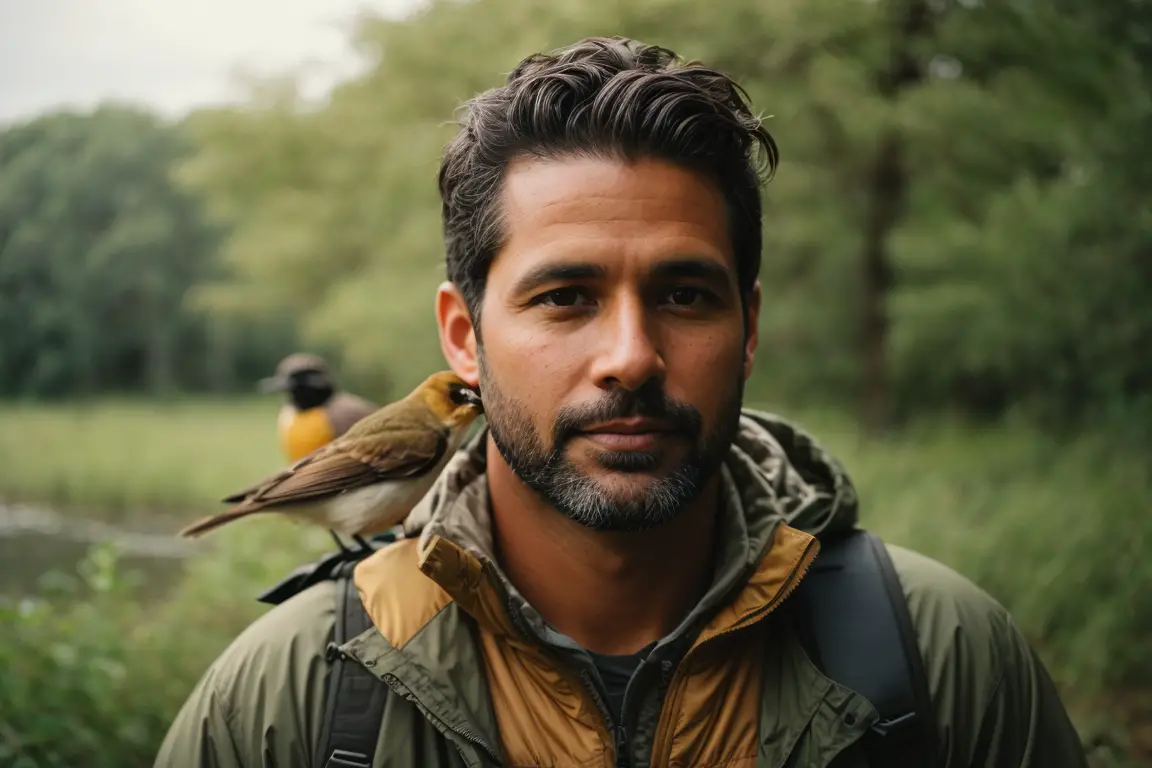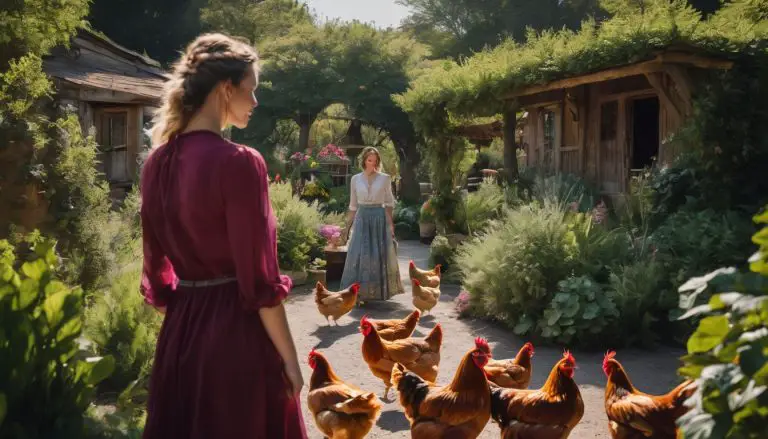Ever caught yourself pausing by a pond, charmed by the animated quacking of ducks? There’s a good chance you’ve stumbled upon more than just random noise—it’s their very own gabfest.
Hey there! As someone who has spent countless hours in nature’s nooks and crannies, attentively tuning into our winged companions, I’ve come to grasp the subtle nuances of duck chatter.
Each quack and wag is a syllable in an elaborate aquatic sonnet—a language that has revealed its secrets to me through dedication and keen observation.
Learning about duck talk isn’t exclusive to lab coat wearers or binocular-toting bird watchers; it can truly add depth to anyone’s outdoor adventure. Ducks have crafted a symphony of calls that beautifully narrate their daily escapades—from their enthusiastic food hunts to their strategic predator dodges.
So don’t wander off just yet! We’re about to wade into the captivating world of duck dialogue—where every quack counts.
Key Takeaways
- Ducks have their own way of talking using different quacks and noises to tell each other about danger or where they are.
- Not just with sounds, ducks also say things by moving their bodies—wagging tails, tilting heads, or blowing bubbles shows how they feel.
- Male ducks make special sounds and show off in cool ways to get female ducks to like them during mating season.
- You can try making duck sounds yourself by practicing quacks, whistles, and clicks with your tongue.
- When you see a duck wag its tail or blow bubbles in the water, it usually means that duck is happy.
Understanding Duck Communication
When it comes to understanding duck communication, there are various aspects to consider such as verbal language, non-verbal behavior, and breeding behavior. Ducks use a combination of sounds and body movements to convey their emotions and intentions.
Verbal Language
Ducks talk a lot with different quacks and noises. The female mallard is famous for her quack that starts loud and gets softer. This duck call tells other ducks where she is or if there’s danger nearby.
Ducklings learn to make the same sounds early, even talking to each other before they hatch.
Each duck sound has its own meaning, like when they are mad or scared; we call this an agonistic call. Ducks don’t just quack—they make all sorts of noises depending on what they want to say.
They might be trying to find a friend, warn about trouble, or look for a mate. It’s fun to listen and try to understand their language!
Non-Verbal Behavior
Ducks use non-verbal behavior to communicate. They wag their tails, tilt their heads, and blow bubbles to show their feelings. Ducklings also engage in non-verbal communication from a very young age, even before they hatch.
Understanding these behaviors helps us interpret duck interactions and emotions.
Observing ducks’ body language can reveal a lot about how they are feeling or what they might do next. By recognizing these cues, birders can gain insight into the complex world of duck communication and behavior.
Breeding Behavior
Breeding behavior in ducks is fascinating. The male duck uses its call to attract a female during the mating season. This call is different from the regular quack and sounds more like a soft whistle or cooing noise.
Additionally, male ducks also perform elaborate displays of dipping their bill into the water and shaking their head vigorously from side to side to impress the females. These behaviors are essential for courtship and mating rituals among ducks, helping them find suitable partners for breeding.
Understanding these breeding behaviors can provide valuable insight into the complex communication and interactions of ducks with each other, shedding light on their social dynamics and reproduction strategies.
Decoding Duck Sounds
Learn about the common sounds ducks make and how to interpret them. Understanding duck vocalizations can help birders better understand and appreciate these waterfowl creatures.
Common Duck Sounds
Ducks make a variety of sounds to communicate with each other. These sounds serve different purposes and can convey various messages. Here are the common duck sounds you might hear in the wild:
- Quacking: The quintessential duck quack is often associated with female mallards. It can range from 2 to 10 quacks that start loud and then soften.
- Piping: Ducklings engage in piping, which is a series of short, high-pitched calls that they use to communicate with each other before hatching.
- Grunting: Ducks also produce grunting sounds, especially during breeding season as part of their mating calls.
- Whistling: Whistling noises can be heard when ducks take off or land, serving as a means of communication during flight.
- Growling: This sound indicates aggression or distress and is often used during conflicts between ducks.
How to Make Duck Sounds
To make duck sounds, you can use your voice or tools to create realistic calls. Here’s how:
- Mimicking Quacks: Practice making the classic “quack” sound by saying “qweck” or “quack” repetitively, emphasizing the “ck” or “k” sound.
- Whistling: Use a duck call whistle with different pitches and tones to imitate specific duck calls.
- Tongue-clicking: Make a clicking noise by quickly placing your tongue against the roof of your mouth to mimic some diving ducks’ unique vocalizations.
- Grunting and Squealing: Experiment with grunting and squealing sounds to replicate the sounds ducks make when they are interacting or displaying aggression.
- Understanding Duck Body Language: Pay attention to accompanying body movements while vocalizing as ducks often use both sounds and physical actions for communication.
Signs of Duck Happiness
When ducks are happy, they may wag their tail feathers, tilt their head in a relaxed manner, and blow bubbles in the water. Understanding these signs can help birders better appreciate the behavior and contentment of ducks in their natural habitat.
Tail Feather Wagging
When ducks wag their tail feathers, it’s a sign of contentment and relaxation. You may notice them doing this after preening or swimming in the water. Mallard ducks often engage in tail feather wagging as a way to show that they are feeling happy and at ease.
This behavior is an important non-verbal communication signal among ducks, indicating their well-being without making any sounds. It’s essential for birders to recognize these signs to better understand duck behavior and ensure their well-being in captivity or in the wild.
Head Tilt
Ducks often communicate through body language, and one of these gestures is the head tilt. When a duck tilts its head, it could be trying to see or hear something better. This movement can indicate curiosity or alertness, showing that the duck is paying attention to its surroundings.
It’s a common behavior seen in ducks and can help observers understand their level of interest in different situations.
Duck behavior involves various cues like the head tilt that provide insights into their state of mind and intentions. Observing these behaviors helps us decode duck communication more effectively, enabling us to appreciate and understand these fascinating waterfowl better.
Blowing Bubbles
Ducks also communicate through a behavior called “blowing bubbles.” When they’re feeling relaxed and content, ducks will often submerge their heads and blow air through their nostrils while underwater.
This creates a trail of bubbles on the water’s surface, which is a sign that the duck is happy and at ease.
This behavior is particularly common in dabbling ducks like mallards and teal. Blowing bubbles not only signifies their well-being but can also be an entertaining sight for birders observing these graceful creatures in their natural habitat.
Conclusion
In conclusion, understanding duck communication and sounds is essential for birders. Duck language includes quacks, tail feather wagging, head tilting, and blowing bubbles. By interpreting these signals, we can discern their emotions and interactions within the flock or while breeding.
Learning to make duck sounds allows us to communicate better with them in their natural habitat.
I’m Owen Featherstone, your bird-watching buddy and enthusiast of all things feathered! Armed with binoculars and a notebook, I’m on a never-ending quest to uncover the mysteries of our avian friends. Whether it’s deciphering melodies in a dawn chorus or finding out if hummingbirds ever take coffee breaks, I’m here to share the delightful world of birds with you. So grab your virtual wings, and let’s explore the skies together!







